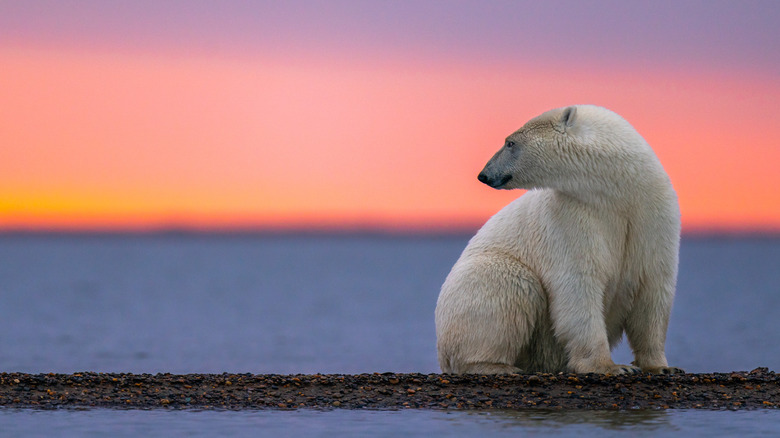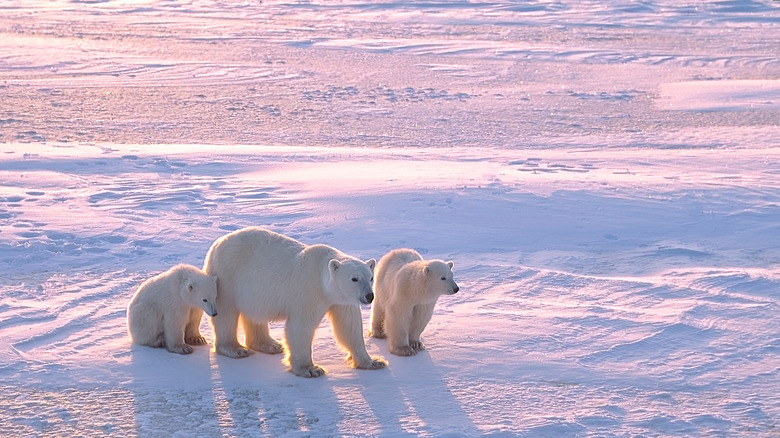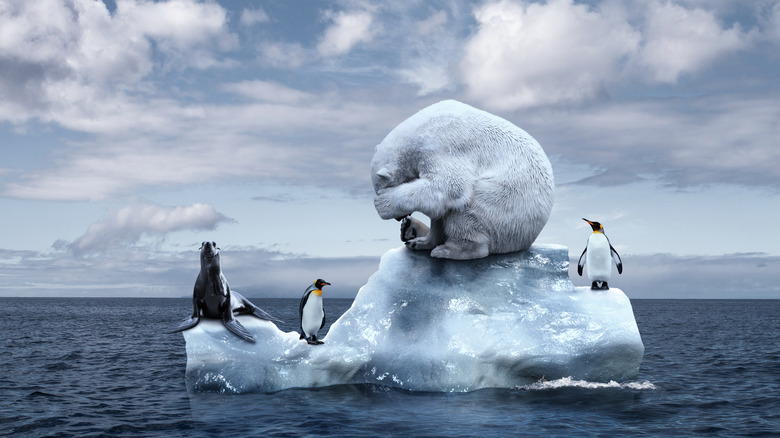Scientists Found A Secret Set Of Polar Bears - Here's Why That Matters
Climate change caused by the gradual buildup of carbon dioxide in the Earth's lower atmosphere shows no sign of slowing down, especially since many automobile manufacturers are not yet properly equipped to roll out electric vehicles on a large enough scale to decelerate ongoing climate disasters. Though there have been wide efforts across the automotive industry to make electric vehicles tenable for everyone by around 2030. The melting of the Earth's ice caps in Greenland and Antarctica — on the North and South Poles, respectively — is an ongoing disaster tied to climate change, and it has aggressively shifted the way of life for species that normally rely on cold climates for their survival.
The example most often used to depict such changes is the polar bear, which is currently classified as "threatened," by the Endangered Species Act. This means that the polar bear population is rapidly dwindling in the wild, and could be extinct outside of captivity in the not-so-distant future. The gradual destruction of the polar bears' habitat in the wild is likely due to melting ice in the northern hemisphere caused by excess heat trapped in the Earth's atmosphere from the excess amount of carbon dioxide in the air, storing heat from sunlight.
Polar bear populations are more adaptable than previously thought
The polar bears' "threatened" classification, which was initially granted in 2008 by the Endangered Species Act, may have slowed down some efforts by hunters and poachers to turn more than a few polar bears into food and clothing. This is far from enough to keep the polar bear population from reacting adversely to the loss of habitat and potential food sources in the future. According to the Pacific Marine Environmental Laboratory, there are a multitude of considerations that factor into the long-term survival of a polar bear population's success in the wilderness. One example is the way that increased or decreased snowfall can pose difficulties in hunting prey or building a nest.
One group of roughly 300 polar bears in Greenland, out of around 22,000 to 31,000 total surviving polar bears living in the wild, is surviving in ways that many marine biologists did not initially expect. A report by Science suggests that the aforementioned population may be able to outlive their purely terrestrial peers by surviving on the slopes of fjords — rivers that flow through chasms with steep cliffs or slopes on both sides.
Polar bears may still dwindle before the population stabilizes
The find potentially marks the 20th subspecies of polar bear to be discovered, but more importantly, it could represent fresh hope for the future of the species as a whole. Whereas most polar bears rely on arctic ice to catch seals, it seems like this subspecies makes it work hunting on sheets of glacial sea-ice mélange that intermittently float by. For quick reference, a mélange is a massive chunk of glacial ice that breaks off from a larger glacier, and it can also be host to marine life.
On one hand, these polar bears are reportedly adapting quite well to conditions that scientists predict will eventually be reflected across the entire Arctic Circle, disproportionately affecting the entirety of the polar bear diaspora by the end 21st century. On the other hand, however, these conditions may still pose challenges to sustaining a population greater than several-hundred bears in a single region, where habitats may still only support a limited amount of ursine life. The slopes of a fjord are not a natural habitat for polar bears, which are usually found in parts of the North Pole and surrounding regions where ice is available year-round.


